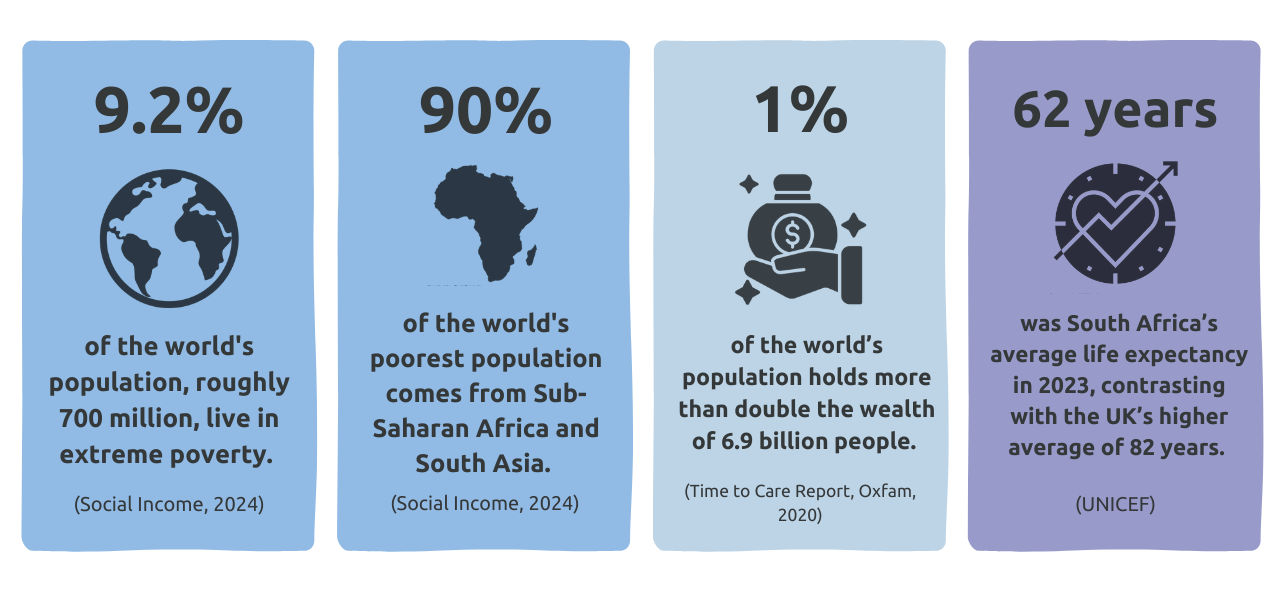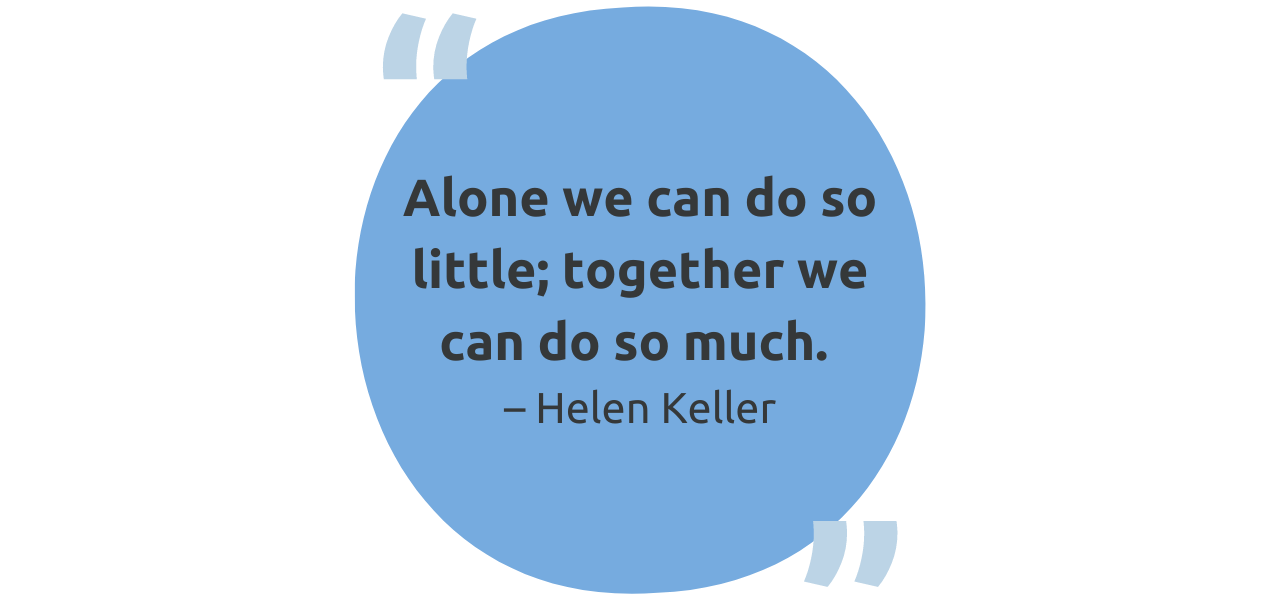Unveiling the Layers of Poverty
“Poverty is not just a lack of money; it is not having the capability to realise one’s full potential as a human being.” – Amartya Sen, Economist and Philosopher
In its various forms, poverty has long been a major historical challenge. We commonly view poverty simply as a shortage of money and material resources. However, this oversimplified definition overlooks its intricate and multifaceted nature.
The World Bank defines poverty as a "pronounced deprivation in well-being", acknowledging that it's not just about financial resources but also about lacking access to opportunities, services, and necessities for a fulfilling life.
Regardless of financial status, anyone can grapple with necessities such as food, healthcare, or adequate housing shortages. This universality of poverty highlights its pervasive nature.
To fight poverty effectively, we need to understand it fully.
The Different Types of Poverty
When exploring poverty, it's important to understand its complex nature.
Sociologists have identified several types of poverty, including:
Extreme Poverty
Extreme poverty includes absolute poverty and relative poverty.
Absolute poverty happens when people don't have access to basic human needs like food, shelter, and clothing for an acceptable standard of living.
Relative poverty is when people's living standards are lower than others in their particular social or economic setting, leading to inequalities in resources and opportunities.
Multidimensional Poverty
Multidimensional poverty means people lack necessities in several areas of life, such as education, health, and living conditions. It's not just about income but considers multiple aspects.
Generational Poverty
Generational poverty occurs when poverty continues from one generation to the next in a family. It's a cycle in which economic struggles, limited resources, and social problems persist across several generations.
Social Exclusion Poverty
Social exclusion poverty occurs when people or groups are consistently excluded or marginalised from fully participating in society's social, economic, and cultural aspects. This means they're denied opportunities, resources, and rights, leading to ongoing disadvantage and limited societal involvement.
Situational Poverty
Situational poverty is a short-term period of financial difficulty caused by specific events like job loss, illness, conflict, or natural disasters. Unlike generational poverty, it's not a long-lasting problem but arises from particular situations. Once these situations are resolved, individuals in situational poverty can often improve their finances and overcome poverty.
Rural Poverty
Rural poverty occurs when people or communities in rural areas struggle financially and lack sufficient resources or opportunities. This results in lower incomes, fewer job opportunities, inadequate infrastructure, and challenges accessing essentials such as healthcare and education. Factors like farming conditions, limited job availability, and distance from urban areas can contribute to rural poverty.
Urban Poverty
Urban poverty happens when people or communities in cities or metropolitan areas struggle financially and lack crucial resources and opportunities. This includes low incomes, limited job options, inadequate housing, and difficulties accessing vital services like healthcare and education. Problems such as overcrowded homes, informal employment, and inadequate city infrastructure are commonly associated with urban poverty.
Global Poverty Statistics
Let's delve into the numbers that reveal the state of global poverty. These statistics offer valuable insights into the ongoing global fight against poverty, emphasising the urgent need to keep working to end poverty and address the pressing challenges many worldwide face.
As we reflect on these staggering statistics, it's evident that the fight against poverty is far from over.
According to the World Bank, at current rates of progress, the world is unlikely to meet the global goal of ending extreme poverty by 2030. Estimates indicate that nearly 600 million people will still be struggling in extreme poverty by then.
With millions of lives at risk, there's an urgent need for continued action and support.
Breaking the Poverty Cycle
Poverty is complex and has many aspects, so we need a diverse approach to eliminate it.
Education
A 2019 Oxfam report highlighted education as "the great equaliser and leveller", showing it's a powerful tool for tackling poverty-related inequality. Education provides individuals with essential skills that enable them to secure better-paying jobs and plays a crucial role in driving economic growth.
Economic Empowerment
Economic empowerment programmes are crucial for breaking the poverty cycle. They offer low-income families loan opportunities, better markets, savings groups, and business training. These resources help people become self-reliant, boosting confidence and encouraging active economic involvement.
Social Inclusion Initiatives
To tackle social exclusion and poverty, it's important to have specific projects and initiatives that address widespread inequalities based on gender, race, age, and disability. Bridging the gap between the privileged and underprivileged helps empower impoverished communities to go beyond the international poverty line consistently.
Healthcare Access
Access to healthcare is critical for reducing poverty because it helps prevent people from facing financial difficulties due to expensive medical bills. When healthcare is affordable and accessible, individuals can receive treatment for illnesses without facing financial hardship. Being healthy also enables them to work more and increase their earnings. Additionally, preventive measures such as vaccines and check-ups can prevent diseases from spreading, resulting in fewer sick days and greater financial stability for families.
Economic and Institutional Reforms
Fighting poverty in developing countries requires significant changes in the economy and how things are run. This means ensuring fair land ownership, having governments that include everyone and are open about what they do, stopping corruption, and involving women, youth, and those living in poverty in the decision-making process. Making taxes fairer can also contribute by ensuring that money is used more effectively and directed towards encouraging economic growth.
A Sustainable Approach to Poverty Reduction
At The Dandelion Philosophy, we tackle social issues at their core, aiming for lasting change. Our holistic initiatives aim to transform communities for the long term, leading to sustained improvements and reduced reliance on external aid.
Our approach is not just effective, it's empowering. We provide communities with the tools and skills to overcome poverty, fostering a sense of self-reliance and resilience. This empowerment leads to a lasting sense of pride, self-esteem, and independence.
Without a sustainable approach, we risk perpetuating the cycle of need and dependence. While temporary solutions may offer immediate relief, addressing the root causes is what paves the way for lasting change and real improvement.
We can make a tangible difference and build a brighter future through collective effort and commitment.







